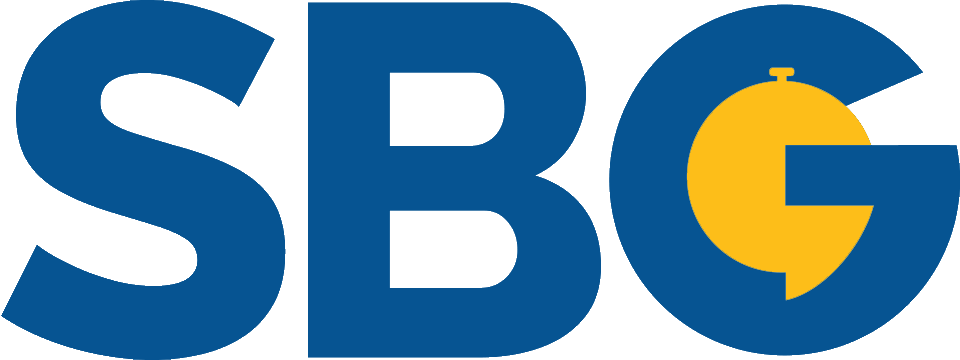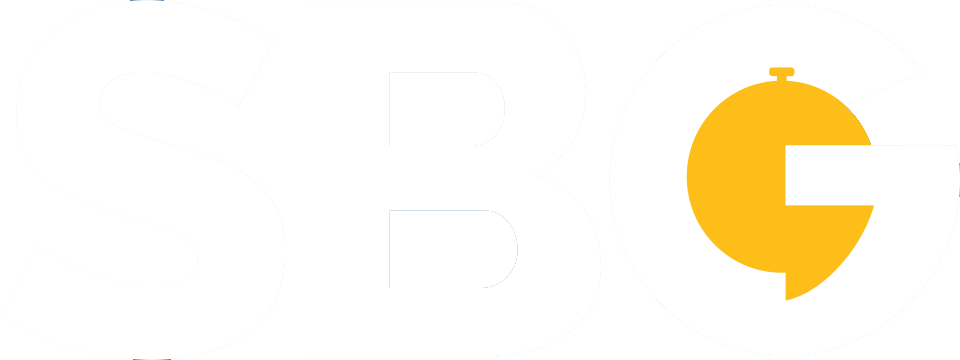Have you ever found yourself tangled in the web of marketing jargon, wondering what the actual difference between different terms is? Don’t worry- you’re not alone! Today, we will dissect demand generation and lead generation – the two that often cause a lot of confusion.
These two terms might sound like they belong in a marketing textbook, but understanding them is crucial if you want to attract the right target audience and boost your conversion rate.
Now, we’re diving into the nitty-gritty of demand generation vs lead generation, breaking it down in a way that’s as easy as chatting with a friend over coffee. So, grab your favorite mug, and let’s get started!
What is Demand Generation?
Alright, let’s kick things off by talking about demand generation. Imagine you’re throwing a party. You want people to be excited about it, right? Demand generation is like sending out those party invitations and hyping everyone up. It’s all about creating awareness and interest in your brand or product among your target audience.
Demand generation involves various generation tactics to build interest and attract potential customers to your brand. The ultimate goal of this is to create a buzz and get people talking about what you offer, making them curious enough to want to know more.
But what does that really mean? Let’s break it down:
Creating Awareness
Think of demand generation as the initial spark that lights the fire of interest. It’s the stage where you’re shouting from the rooftops, “Hey, look at what we’ve got here!” This could be through engaging social media posts, eye-catching ads, or informative blog posts. The idea is to make people aware that your brand exists and that you have something valuable to offer.
Building Interest
Once people are aware of your brand, the next step is to pique their interest. This is where your content comes into play. High-quality, valuable content like informative blog posts, insightful whitepapers, or engaging videos helps in building a deeper interest. You want your target audience to start thinking, “This is interesting; I want to know more.”
Educating Your Audience
Demand generation isn’t just about getting noticed; it’s also about educating your audience. Providing valuable information that addresses their pain points, answers their questions, and offers solutions to their problems is crucial. This positions your brand as an authority and builds trust with your potential customers.

Generating Excitement
Creating a buzz around your brand is essential. This could be through exciting announcements, sneak peeks of new products, or hosting webinars and events. The goal is to get people talking about your brand, sharing your content, and spreading the word. When people are excited about your brand, they’re more likely to engage with you and consider your products or services.
Why Demand Generation Matters
Understanding and implementing demand generation is crucial for several reasons:
- Brand Awareness: It helps in making your brand known to a wider audience, ensuring that more people know who you are and what you offer.
- Audience Engagement: It keeps your audience engaged with your brand through valuable and interesting content, fostering a deeper connection and encouraging loyalty.
- Sales Funnel: It fills the top of your sales funnel with potential customers who are aware of and interested in your brand, setting the stage for future conversions and sales.
- Trust and Authority: It establishes your brand as an authority in your industry, building trust with your audience by consistently providing valuable information and solutions.
By focusing on these aspects, demand generation lays a strong foundation for attracting and retaining potential customers, ultimately driving long-term success for your business.
What is Meant by Lead Generation?
Now, let’s switch gears and talk about lead generation. If demand generation is like sending out party invitations and hyping everyone up, lead generation is like getting those RSVPs (respond, if you please). It’s all about capturing the interest you’ve created and turning it into actionable contacts. Essentially, lead generation takes that excitement and curiosity and transforms it into tangible prospects for your business.
Lead generation focuses on converting the interest generated by demand generation into potential leads. This means gathering information from people who show interest in your product or service, typically through gated content where they exchange their email addresses for access to valuable resources.
But what does that really mean? Let’s break it down:
Capturing Interest
Lead generation is about capturing the attention of those who have shown interest in your brand. Think of it as the moment when someone who’s been eyeing your party finally decides to RSVP. You’ve got their attention, and now it’s time to make it count.
Converting Interest into Action
Once you’ve captured that interest, the next step is to convert it into action. This is where tools like landing pages, sign-up forms, and gated content come into play. By offering something valuable, like an exclusive eBook or a free trial, you encourage your audience to take the next step and provide their contact information.
Qualifying Leads
Not everyone who shows interest will be a good fit for your product or service. Lead generation involves qualifying these leads to ensure they meet certain criteria. This is like checking your guest list to make sure you’re inviting the right people. You want to focus on those who are most likely to benefit from what you offer.
Nurturing Relationships
Lead generation doesn’t stop once you have someone’s contact information. It’s about nurturing those relationships through consistent communication and valuable content. This helps build trust and keeps your brand top-of-mind, guiding potential leads down the sales funnel.
Why Lead Generation Matters
Understanding and implementing lead generation is crucial for several reasons:
- Building a Prospect List: It helps in creating a list of potential customers who have shown interest in your product or service, making it easier to target them with future marketing efforts.
- Increasing Conversion Rates: By focusing on qualified leads, you can increase your conversion rates, turning more prospects into paying customers.
- Streamlining the Sales Process: With a well-defined list of leads, your sales team can work more efficiently, focusing their efforts on high-potential prospects.
- Driving Revenue: Effective lead generation directly contributes to your bottom line by turning interest into actual sales, driving revenue growth.
Now, focusing on these aspects helps you ensure a steady flow of prospects who are primed and ready to be converted into loyal customers. This not only boosts your sales but also supports long-term business growth. Pretty neat, right?
Is Demand Generation the Same as Lead Generation?
We understand why you might still think this since they are pretty similar. But nope, demand generation and lead generation are not the same. They might be like two peas in a pod, but each pea has a different job to do! Let’s check the difference in practical examples.
The Sales Funnel and The Sales Process
Okay, now’s the time to see how each fits into the sales process and the sales funnel.
Demand Generation
Demand generation sits at the top of the sales funnel, often referred to as the awareness stage. It’s all about creating buzz and bringing a wide audience into the funnel. Think of it as casting a wide net to attract as many potential customers as possible. During this phase, potential customers first hear about your brand and start to develop an interest. This is achieved through activities like:
- Content Marketing: Publishing blog posts, videos, and social media content that address the needs and interests of your target audience. Content marketing is a great way to keep people coming back to your website if done correctly.
- SEO and SEM: Optimize your website and use search engine marketing to increase visibility and attract visitors.
- Social Media Campaigns: Engaging with a broad audience on platforms like Facebook, Twitter, and Instagram to build awareness and interest.
The goal here is to generate a large pool of potential buyers who are aware of your brand and intrigued by what you offer.
Lead Generation
Lead generation comes into play as you move down the funnel, typically at the interest and consideration stages. After creating interest through demand generation, lead generation captures the details of those who are truly interested. This is where you start to qualify and nurture leads, guiding them further down the sales process towards a purchase. Key activities include:
- Landing Pages and Forms: Creating dedicated pages where visitors can provide their contact information in exchange for something valuable, like a free eBook or webinar.
- Email Marketing: Sending targeted emails to nurture leads, providing them with more information, and guiding them towards making a decision.
- Free Trials and Demos: Offering hands-on experiences with your product to help potential customers understand its value.
At this stage, you’re focusing on turning interested prospects into qualified leads. You’re identifying those who have a genuine interest and fit your ideal customer profile. These leads are then nurtured through personalized content and interactions, moving them closer to making a purchase decision.
How They Impact the Customer Journey and Sales Cycle
Now. let’s see some important things that lead and demand generation impact:
- Customer Journey
Demand generation starts the customer journey by making potential buyers aware of their problems and how your product can solve them. It’s like shining a spotlight on your brand, making people aware of their needs and your solutions.
Lead generation continues this journey by engaging these potential buyers, providing more detailed information, and guiding them toward a purchase decision. Think of it as explaining why your ice cream is the best and then inviting them to try a sample.
- Sales Cycle
Demand generation typically has a longer-term impact, filling the top of the funnel and creating a pool of interested prospects. It’s the initial spark that keeps the pipeline full. Lead generation has a more immediate impact, working to convert these prospects into leads and moving them quickly through the sales cycle.
It’s the process of turning interest into actionable steps, leading to quicker sales. It’s like getting people from just hearing about the ice cream shop to actually coming in and buying a scoop.
The Role of Marketing Teams and the Sales Team
Of course, we can’t skip this part – the people who are actually making it all happen!
- Marketing Teams
These folks often take the lead on demand generation. They use various strategies and tactics to attract a wide audience and build interest in the brand. Their efforts are focused on creating engaging content, running awareness campaigns, and driving traffic to your website. It’s like the team that designs colorful posters and runs ads to let everyone know about the new ice cream shop.
- Sales Team
Once leads are generated and qualified, the sales team steps in. They work to convert these leads into customers, closing deals and driving revenue. Their role is crucial in nurturing leads, addressing their concerns, and guiding them through the final stages of the sales process. They are like the friendly staff in the ice cream shop who help customers decide on flavors and make the sale.
Why Knowing the Difference Matters
Understanding the difference between demand generation and lead generation can significantly enhance your marketing efforts. Here’s why:
Aligning Your Marketing Strategy with Your Ideal Customer Profile
By distinguishing between the two, you can better align your marketing strategy with your ideal customer profile. You’ll know when to focus on broad awareness and when to narrow down to capturing and nurturing leads. This ensures your efforts are targeted and effective, reaching the right audience at the right time. It’s like knowing when to use big, flashy ads to attract everyone and when to use special offers to get serious buyers.
Enhancing the Effectiveness of Your Demand Generation Efforts
Knowing the difference allows you to enhance your demand generation efforts by ensuring you’re not just creating noise but also capturing actionable interest. This balance ensures a steady flow of qualified leads. It’s about making sure your marketing dollars are well-spent, generating interest that can be converted into real opportunities. It’s like making sure your ice cream shop ads not only get attention but also bring in customers who really want to buy ice cream.
Driving More Qualified Leads and Potential Buyers
A clear understanding of both processes helps in driving more qualified leads and potential buyers into your sales funnel. This means more high-quality prospects that are more likely to convert into paying customers. It’s about quality over quantity, ensuring the leads you generate are truly interested and ready to buy. It’s like having a list of people who love ice cream and are likely to
Practical Tips for Implementing Both
Last but not least, here are some practical tips you should take into consideration:
Combining Demand Generation Strategies with Lead Generation Tactics
If this wasn’t obvious by now, we’ll clarify it: to get the best results, combine your demand generation strategies with lead generation tactics. This might look like using high-value content to attract a broad audience and then using targeted offers or gated content to capture and nurture leads.
This integrated approach ensures you’re attracting a wide audience and effectively converting interest into action. It’s like using big ads to attract everyone and then offering free samples to get them to sign up for a loyalty program.
Metrics to Track for Continuous Improvement
To ensure your strategies are effective, track relevant metrics such as:
- Conversion Rate: The percentage of visitors who turn into leads. This helps you understand the effectiveness of your lead generation efforts. It’s like seeing how many people who see your ice cream shop ad actually come in and buy ice cream.
- Engagement Rate: How actively your audience interacts with your content. High engagement indicates strong interest and a healthy demand generation strategy. It’s like noticing how many people are liking, sharing, and commenting on your ice cream shop posts.
- Lead Quality: The relevance and readiness of your leads to make a purchase. High-quality leads are more likely to convert into customers. It’s like making sure the people who sign up for your ice cream loyalty program really love ice cream.
- Sales Cycle Length: How long it takes to convert a lead into a customer. A shorter sales cycle indicates efficient lead nurturing and conversion processes. It’s like seeing how quickly people decide to buy ice cream after trying a sample.
This ongoing analysis will help you make sure that your marketing efforts remain effective and aligned with your business goals, which will surely skyrocket your sales through the roof!
Closing Thoughts
In summary, demand generation creates awareness and excitement, while lead generation captures and nurtures that interest into actionable leads. By understanding and balancing both, you can attract a wide audience and convert them into loyal customers.
Remember, keep trying out different strategies and track your results to continuously improve. With this balanced approach, you’ll be well on your way to boosting your conversions and growing your business. Now, go out there and make some noise – and don’t forget to reel in those leads!



